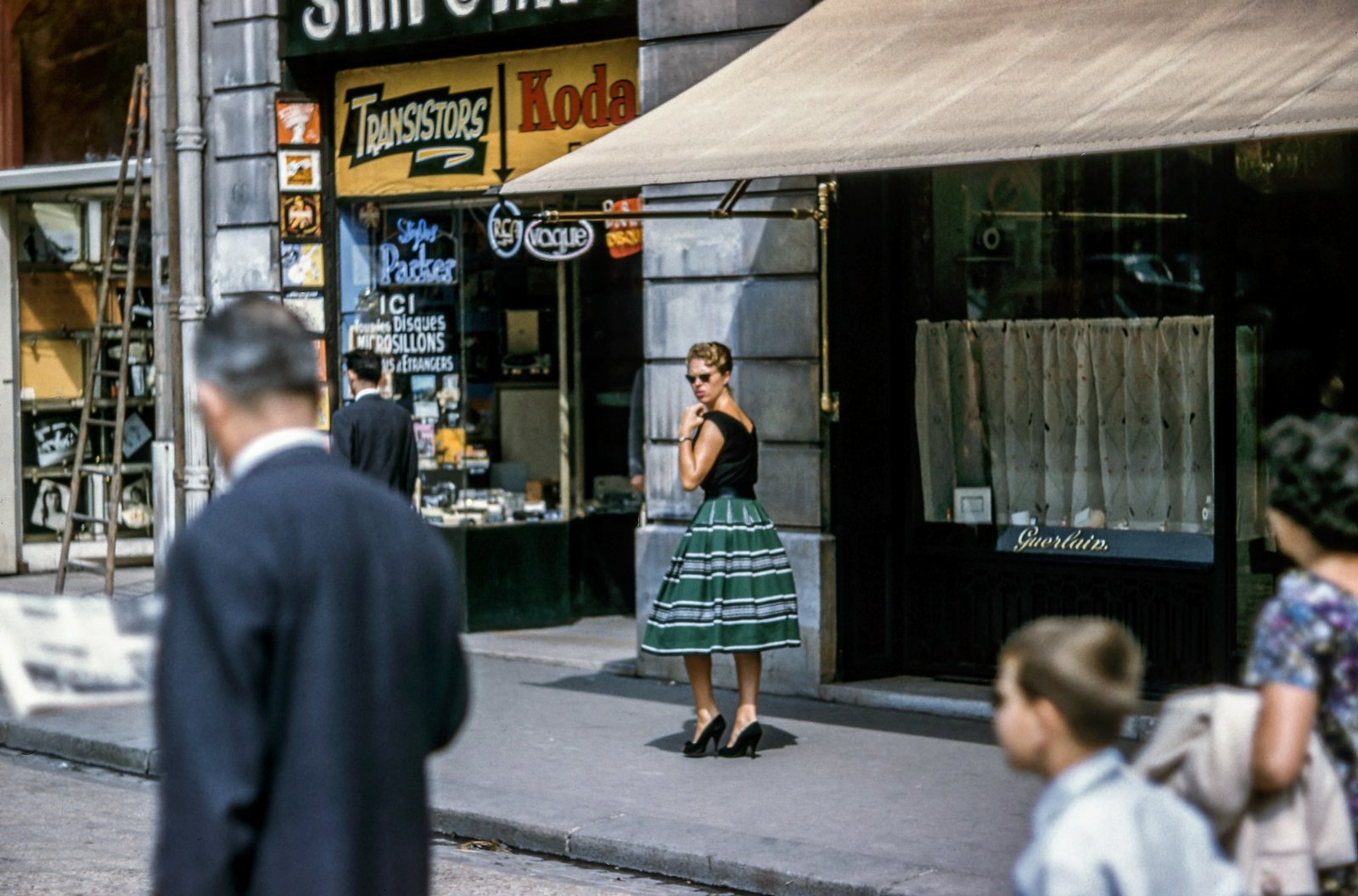In the fashion world, the term “vintage”, in its strictest sense, refers to all garments that are at least twenty years old. That means that in order for an item to be considered vintage, it needs to have been produced in 2005 at the earliest. However, in recent years, the term has expanded to include several other categories, such as second-hand clothes and even retail outlets. Vintage clothing has become increasingly popular over the last few years as shoppers are driven by sustainability, the desire to save money, and the wish to create styles that are truly unique. As such, while wearing pre-loved clothes may have had negative connotations in the past, vintage is king at the moment, and people are increasingly wearing the clothes on a daily basis.
One of the most obvious markers of acceptance is the fact that vintage clothes have become acceptable for formal occasions as well. In fact, some events are specifically designed with vintage aesthetics in mind, meaning that it only makes sense for the outfits to draw inspiration from earlier times as well. Proms are one of the most common examples, and since they are such an important part of a graduate’s experience, you will definitely want to ensure that your vintage prom outfit is perfect.
Flapper dress
When you’re looking for a vintage outfit, it helps to have at least a general idea about the styles that used to be popular back in the day. The flappers were a subculture of young women that gained notoriety in the aftermath of the First World War. The style was popular throughout the 1920s, which makes the look part of antique fashion at this point since it is officially a century old. The flappers wore knee-height skirts, which were considered exceedingly short and quite scandalous for the time, cut their hair short, and listened to jazz. They wore visible makeup and drove cars, habits that are so normal nowadays but earned them descriptors such as “reckless” back then.
A reimagined version of a flapper dress continues to be widely popular nowadays. The gowns are straight, sleeveless, and end right above the knee. Most of the dresses are adorned with intricate beadwork, fringes, and scalloped hemlines.
Ballgown extravaganza
In the 1950s fashion styles became much more conservative, being focused on elegance and formality. Items would be perfectly matched to the wearer so that the fits were neither oversized nor constricting. The decade was split between two different silhouettes: slim fitting pencil skirts and wasp waists with full skirts. When it comes to the prom, the second alternative is obviously preferable as it is much easier to get it to look festive.
The dresses can be adorned with additional details such as oversized bows, tulle tiers, embroidery, and pleats. If you want to go the extra mile, you can also wear your gown with opera gloves for a full look, and look for popular 50s hairstyles to go with the style.
Swinging Sixties
The Roaring Twenties represented a break from previous conservative styles that were later resumed in the 50s only to be challenged once more during the 1960s. This is the era that made fashion styles progressively more casual for everyone. Many of the designs that became popular during that time, such as turtlenecks, ankle boots, Mary Jane shoes, miniskirts, and leopard print, are still very popular nowadays, with many considering them timeless classics that will never go out of style.
The little black dress was a very popular type of evening dress during this time, but gowns in pastel hues were typical of the ’60s as well. Most gowns had a thin waistband tied in a flat bow, a signature element of the decade. The sheath dress (most common in different shades of pink and jewel tones) is perfect for dancing, while high empire waists (a style that was first popularized in the early 1800s) came back in style. For the dress to truly give off a 60s vibe, the top and bottom should have different colors, and, ideally, be made of different materials as well.
The Disco Era
The 1970s are another iconic fashion period, the one that brought us bell bottoms, frayed jeans, maxi dresses, midi skirts, ponchos, tie-dye, and peasant blouses. While these styles may be controversial for some, there’s no denying their enduring impact on the fashion world. But what about evening wear? The 70s were something of a curious time for formalwear, being at the confluence of the minimalistic 60s and maximalist 80s in this regard. Straight silhouettes, halter tops, V-shaped necklines, lace, and organza were all very popular.
Dresses could be very simple or incredibly structured, featuring tiered skirts, pleated bodices, and ample shoulders made of several layers of fabric. Two-piece sets were popular as well, but the styles had to complement each other. For instance, a simple black blouse would be worn with a long skirt with a complex and colorful pattern.
The 80s
The 80s is an era many people feel nostalgic for, including those who weren’t even born to experience it. Punk fashion and alternative trends became widespread, giving rise to the phenomenon of street style. The introduction of shoulder pads inspired concepts such as power dressing. For daily wear, people preferred minimalism, but when it came to formal gowns and dresses, things were far more complex. Bright and bold colors were the norm, as were ruffles and big, statement jewelry. Floral patterns came back in styles, as did Edwardian-style puff sleeves. Cropped blazers and structured skirts made a comeback as well.
1990s
90s fashion is enjoying a resurgence in the 2020s, as the casual chic look that has hoodies, jeans, sneakers, and t-shirts as the centerpieces reign supreme. Silk blouses in neutral hues, tailored pantsuits, the little black dress, and cocktail dresses are the preferred formal styles of the era. Slip dresses hail from the 90s as well and are versatile enough to be worn with both heels and ballet flats. Overall, the 1990s are much more relaxed than the previous decades when it comes to clothing, signaling the move towards more casual styles that continue to this day.
Countless Options for Vintage-themed Prom Outfit
The fashion trends of the 20th century are so diverse and unique that it might be quite challenging to decide which decade to draw inspiration from for your prom. The one whose style appeals to your personal taste the most should be the winner.
Image source: https://unsplash.com/photos/woman-looking-left-while-standing-beside-store-along-the-road-DPbGPXcmjck









